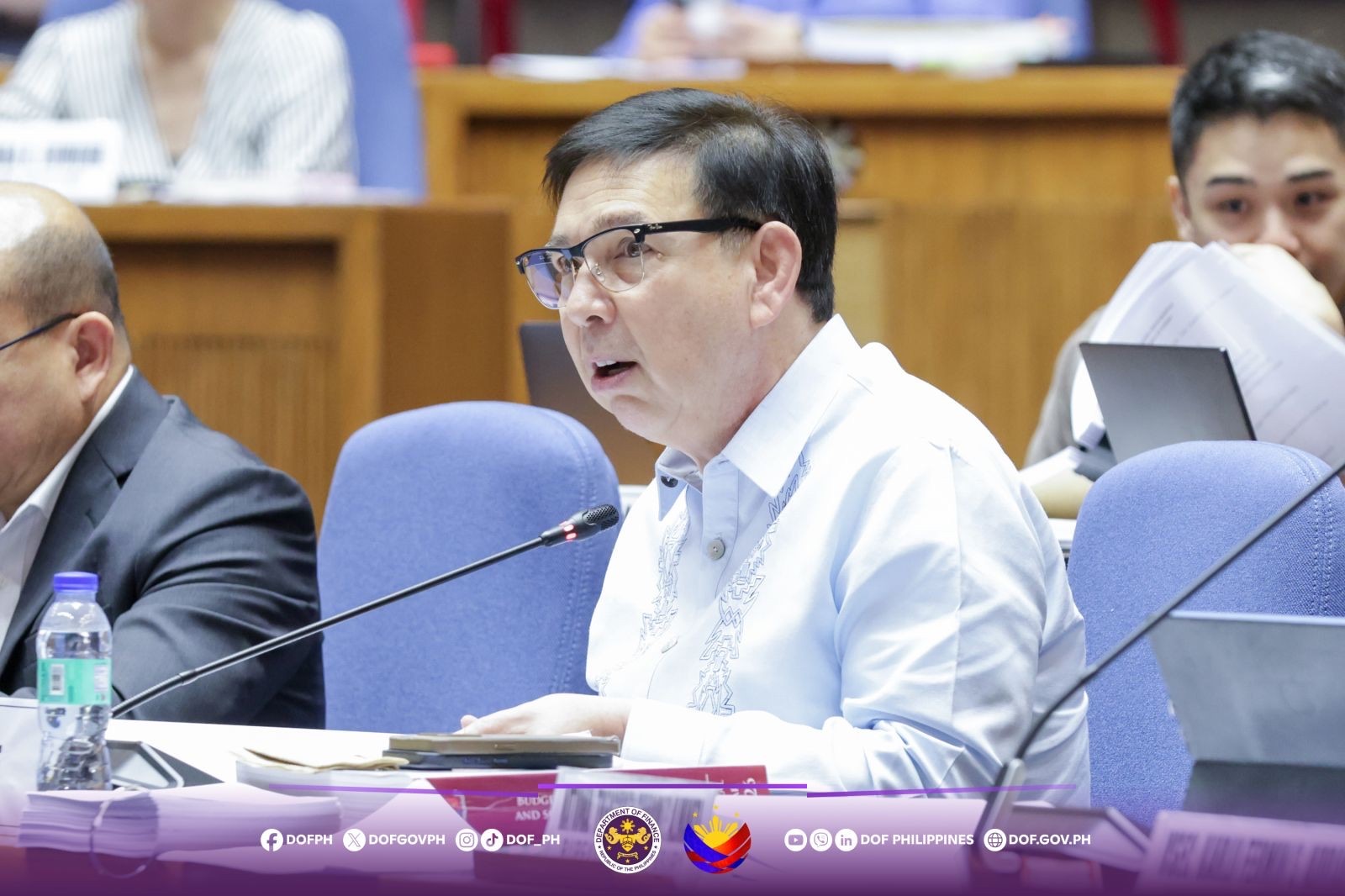Congressmen should discuss the proposed 2026 budget within the framework outlined by the Medium-Term Fiscal Program (MTFP), according to Finance Secretary Ralph Recto.
Speaking at the Development Budget Coordination Committee (DBCC) briefing for lawmakers at the House of Representatives’ Committee on Appropriations on the Fiscal Year 2026’s P6.79 trillion National Budget, Recto said this is “to take into consideration the country’s recovery from the pandemic while navigating global uncertainties such as the Russia-Ukraine war, the Israel-Gaza war, the Israel-Iran war, and trade wars, among others.”
The refined targets under the MTFP, initially set in 2022, “chart a realistic path to gradually reduce the country’s deficit and debt, while creating more jobs, raising incomes, and lifting millions of Filipinos out of poverty,” Recto said.
“And under this, we have ensured that every peso collected or borrowed will be stretched to deliver the biggest bang per buck for the Filipino people,” he added.
“Let us operate within the parameters of the Medium-Term Fiscal Program that reduces our deficit and debt gradually, creates jobs, increases income, and decreases poverty.”
The Medium-Term Fiscal Framework (MTFF), first crafted in 2022, was recalibrated by Recto in 2023 to keep goals attainable, realistic, adaptive to external challenges, and supportive of sustainable growth.
Recto said the government is on track to meet its fiscal targets, with revenue collections growing by double digits over the last three years at an average of 13.8 percent annually.
Tax collections, meanwhile, have consistently expanded at an average of 11.5 percent annually.
“In fact, in 2024, we achieved a revenue effort of 16.7 percent—the highest in the last 27 years. We are also on course to meet our fiscal program for the year, having already achieved half of our targets as of midyear. Our tax collection continued to post double-digit growth, totaling P2.03 trillion. This is 10.7 percent higher than last year,” Recto said.
He noted that this placed the country’s revenue-to-GDP ratio at 16.7 percent for the first half.
“Our expenditures also grew by 9.5 percent in the first half of the year, reaching P3.03 trillion. Meanwhile, our fiscal deficit for the first half stood at P765.5 billion—within our midyear target as a percentage of GDP. Our deficit remains manageable at 5.7 percent for the semester. Our full-year target is 5.5 percent, with tax collections projected to grow by an average of 10.2 percent annually from 2025 to 2028,” Recto added, noting that revenues are on track to hit nearly P6 trillion by the end of the President’s term.
“By 2030, our total revenues will hit P7 trillion,” he said.
In a statement, Recto said revenue collections will be bolstered by recently enacted reforms such as the VAT on Digital Services and the Capital Markets Efficiency Promotion Act (CMEPA), as well as the soon-to-be-enacted Rationalization of the Mining Fiscal Regime Act and the proposed General Tax Amnesty.
The Department of Finance (DOF) is also maximizing non-tax revenues by increasing dividend remittances from Government-Owned or -Controlled Corporations (GOCCs) and privatizing more idle government assets to raise additional resources without imposing new taxes.
“Furthermore, the Bureau of Internal Revenue (BIR) and the Bureau of Customs (BOC) are doubling down on their efforts to enhance tax administration through digitalization, strict enforcement, and plugging of tax leakages,” the DOF said.
Recto strongly cautioned against wasteful expenditures and overappropriation, emphasizing that the DOF stands by two crucial principles: set revenue targets carefully and spend taxes wisely to encourage tax compliance.
“People are naturally resistant to taxes. But their tax obedience can be won if they see how the taxes they paid are spent on the right things, at the right price, by the right agency, at the right time. And that is exactly what this administration is doing—putting every peso where it matters most,” he said.
“Every peso we borrow is invested in productive projects that deliver real benefits to Filipinos. We will make sure that the economy continues to outgrow the country’s debt. This will ensure that we have the ability to pay for our obligations,” he added.
Recto said that if the government strictly adheres to its refined fiscal program and maintains disciplined and efficient spending, the size of the Philippine economy is projected to reach P42.6 trillion by 2030, while keeping debt at P24.7 trillion—equivalent to 58 percent of GDP.
Budget Secretary Amenah Pangandaman, meanwhile, said the proposed budget consists of 64.8 percent program appropriations (P4.4 trillion), 35.2 percent automatic appropriations (P2.39 trillion), and P250 billion (3.7 percent) in unprogrammed appropriations.
The proposed budget allocates 34.1 percent for the social services sector (P2.31 trillion), 27.5 percent for the economic sector (P1.86 trillion), and 17.7 percent for general public services and defense (P430.9 billion).




